You don’t have an idea about how to teach a parrot to talk so you’re looking for tips to help you train your parrot?
You are in the right place!
Here you can read a lot of useful information and learn the easiest ways to train a parrot to talk.


How To Teach Parrot To Talk?
1.Get The Right Bird
Before you get informed about how to teach a parrot to talk, you should find out which parrot species can talk. Most parrots know how to imitate human voices but some do it much better than others. Of course, reaching the goal will depend on both bird species and your training. Congo African gray parrot is the most famous species that will show the best readiness to imitate voices. Also, this is a noisy parrot, so there is no doubt that she will start to talk soon. So, if you have not gotten a parrot yet, this species would not disappoint. Indian ringneck parakeets are one of the species of parrot that can learn many words and phrases. Check and gather information about the bird before you buy it, but keep in mind that these are animals and it should primarily be important for you to provide them with a comfortable home. You need to know that the female cockatiels, rosellas, female budgies, and grass parakeets do not talk.
2.Start With Easy Words
When you start teaching your bird to talk, start with simple words. It will be easiest for you if you learn it when you feed it. For example, if you feed it with banana pieces, repeat the word banana every time you give it food. The bird will after a while associate that word with its food and will start repeating it. Of course, you can teach it other words as well. They will easily remember the words such as love, food, and even your family name. Be persistent, talk a lot in front of your parrot, and do not give up. Also, the parrot will easily remember short words that you keep repeating, for example, hi, bye, hello, and night. You mustn’t teach the bird to whistle before you teach it to speak, because the reverse process will make it harder for it to learn to talk.
3.Reward The Parrot
You will spend a lot of time teaching your parrot to talk. Once it finally repeats your word, you will be overjoyed, but in that surprise, you must not forget to reward it. Choose treats specifically for the type of parrot you have. Make sure you give these treats only when it does something good. This way the parrot will be stimulated to further follow your orders to get more rewards. You will be able to choose the best rewards only when you meet the wishes of your parrot. Some will adore sunflower seeds, and for some, it won’t be a great simulator to keep listening to you. Try to start with peanuts, cashews, almonds, and strawberries. This way of rewarding you will make it fun for both you and your bird. It will always be in the mood to learn new words when it knows it will get a reward.


4.Speak Enthusiastically
If you are wondering how to teach a cockatiel to talk, you need to know that your voice is very important. When you teach a parrot to speak, the way you express yourself is important. Be careful how loud you speak, which tone, and what expressions you use. You need to sound enthusiastic, optimistic, and simply give the birds the freedom to start expressing themselves. They need to feel your calmness and support. Also, pay attention to whether your bird is listening to you. Make sure it is completely focused on you. Choose a bird that is calmer and does not pay attention quickly to other things around it. It needs to listen and follow you to learn words faster.
5.Talk Often To Your Bird
Your parrot needs time to play, feed, and even train. Take enough time each day to teach her a few words. For starters, take the light words you often mention in the house, so the parrot will remember more easily when he hears them every day. After a while, try short sentences. Make sure they are easy to pronounce and learn. When you are not practicing directly with a parrot, you are learning it indirectly. The best way is to talk to your family, friends, or simply turn on the radio near your parrot. They will listen and after a while start repeating what they hear. Choose a simpler name for the bird instead of long names because it will be easier for the bird to learn to pronounce its name. There are many shy and quiet birds that will learn slowly, but you need to be persistent.
6.Reduce Distraction
When you decide to teach a bird to talk, make sure to remove anything that bothers you or deconcentrates you or the bird. It would be best if you taught her in some quiet place where it can be focused on you. Move away from all toys, sounds, and start with simple words. If you own multiple birds, focus on one. And of course, reward the bird for each progress. If you want to know how to train a parrot to talk, you just need to follow the instructions. Also, one person must teach the bird to speak. Everything else will confuse the animal and create difficulties. So if you live with many people, choose the person who will focus on learning the bird.


7.Be Patient
It takes a lot of time and patience to teach a parrot to speak. Some species will speak quickly and repeat words for you, while others will learn gradually and slowly. Some species won’t speak for weeks, and some will start repeating your words after a while. You should try to speak clearly, loud enough, and in a calm tone. That way they will remember the stories faster and want to repeat them. Birds need time to play, so don’t spend all day forcing them to talk. Talk to the other members of the household, that way they will master the lesson faster. Also, there are many differences between male and female cockatiels which are visible when teaching birds to speak. It can be noticed that the bird differs from the bird and that a certain amount of time should be spent with each to train the bird as well as possible.
8.Start When Bird Is Young
The best time to train a parrot is when she is still young. The sooner you start training, the better your results will be. Of course, the speed of their learning will depend on the type of parrot. Likewise, children learn faster and easier when they are smaller, so will parrots. Some parrots will speak very hard, it will take a long time, but some will learn quickly and you will not be able to stop them anymore. Parrots will learn the most by the second year, but many species can learn after the second year. You should also know that birds most often speak over a period of three months or one year. So, if your parrot doesn’t say anything for a long time, maybe it just needs a little time. Of course, the best time to learn birds will be different for different species. For example, smaller birds are best to start training between 4 and 6 months of age. Larger parrots, on the other hand, will learn best between the 6. and 12. months.
9.Trust Is The Key
Your parrot will only speak when it has full confidence in you. She will not listen to you if you scare her or if you are rude. When a bird arrives in your home make sure it gets used to it and you. Give it time to adjust, and start learning after a few months, depending on the type of bird. Speak to it in a calm tone, move slowly near it, so as not to frighten it. Keep an eye on your pets when they are near birds. Parrots are easily disturbed in the presence of other animals and this can prevent them from speaking. Also, noise can be very annoying. Mute your TVs, radio, and other loud sounds. Birds are otherwise very social creatures, so they will enjoy it if you keep them company. Play with them, play music to them, or just talk to them. This will eventually become a habit for them and they will quickly get used to you. If you have children watch how they behave towards parrots and whether they are noisy near them. All of this will depend on how your parrot will treat you and whether your pet will be willing to learn the words.
To Sum Up
Here you could find answers to your question about how to train a parrot to talk. You could find a lot of interesting information that will surely be of help to you. How to teach a parrot to talk should not be difficult if you follow all the above instructions. You have to spend a lot of time, be optimistic, and train your parrot a lot. The results may not be immediately visible, but after a while, they certainly will. Move away from all unwanted items and start with simple words. And do not forget to give a reward to the parrot every time it repeats correctly. Make sure your parrot has comfort in the cage, so choose the best indoor bird cage or outdoor bird enclosure.





















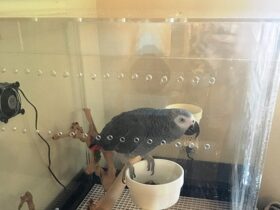



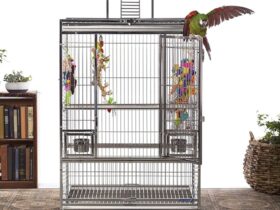


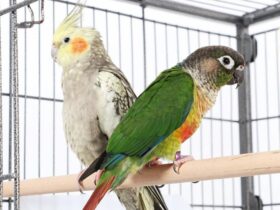
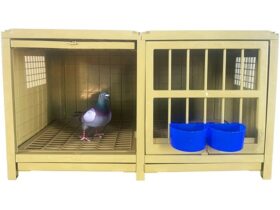
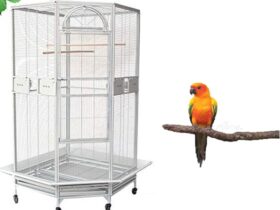
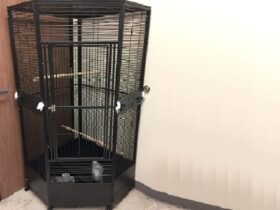
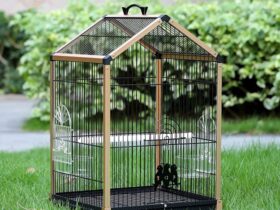
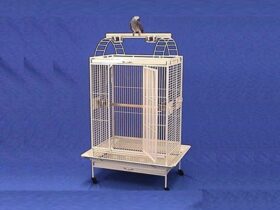

Leave a Reply